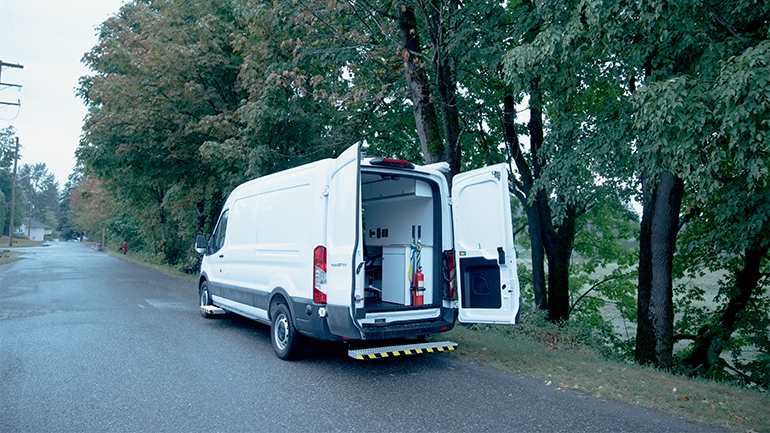
A new mobile overdose prevention site is open at Cheam First Nation (Xwchíyò:m) in Rosedale to support people who use substances and help prevent toxic drug poisonings and deaths.
The Cheam Mobile Overdose Prevention Site located at 52161 West Victor Drive is open from Noon to 6 p.m. daily. The new service includes a customized van where individuals can safely use substances knowing their consumption is witnessed by trained staff. In addition, monitored inhalation services are provided in a separate tent outside the van.
This is the first mobile overdose prevention site located in a First Nations community in B.C. aimed at reducing the harms associated with substance use while embracing an Indigenous-led approach that surrounds users of the site with traditional cultural supports and culturally safe care. In partnership with Cheam First Nation, First Nations Health Authority and Fraser Health, the new site is serving First Nations, Métis and all people living at Cheam as well as those from Chilliwack, Agassiz, Rosedale and adjacent communities.
“The heart-wrenching impact of the toxic drug crisis on our people, families and communities requires a radical, multi-pronged response,” says Cheam Chief Andrew Victor. “Our strategies must evolve to reduce harm and further deaths. Cheam welcomes this mobile overdose prevention site to help protect our loved ones in higher-risk behaviour.”
The Toxic Drug Crisis has disproportionately affected First Nations peoples and communities in B.C.,” says Richard Jock, Chief Executive Officer of the First Nations Health Authority. “Despite making up only 3.3 percent of the population in B.C., First Nations people comprise 16.4 per cent of toxic drug poisoning deaths in 2022, and we must take action to reverse this trend. Alarmingly First Nations women in B.C. died at 11.2 times the rate of other female residents in 2022.”
At the Cheam Mobile Overdose Prevention Site, outreach workers and peer support workers trained to reverse drug poisonings provide a safe environment for clients to consume their own substances.
Harm reduction supplies including Take Home Naloxone Kits and training on how to use them are also available. Care teams can help connect people to other health and social services that weave culture, community, teaching and connection to the land into conventional harm reduction services. Cheam First Nation Wellness Advocates and Elders will be available to engage with clients upon request.
“We know Indigenous Peoples are in the best position to determine the right supports and services for their community,” said Jennifer Whiteside, Minister of Mental Health and Addictions. “That’s why our government is supporting the delivery of Indigenous-led solutions like this new mobile OPS in Cheam First Nation. Indigenous people continue to be disproportionately affected by the toxic drug crisis and the new OPS will go a long way in saving lives in the community.”
“Whether they are mobile, outreach or in-reach services, we must explore any and all opportunities to connect people to the care they need,” says Dr. Victoria Lee, president and CEO, Fraser Health. “It is through partnerships like these with Cheam First Nation and First Nations Health Authority that we are able deliver much-needed overdose prevention and harm reduction supports to the community, helping to save more lives and connect more people to the health services they need.”
Learn more:
Mental health and substance use supports in Fraser Health:
https://www.fraserhealth.ca/health-topics-a-to-z/mental-health-and-substance-use.




